Roses are one of the most beloved flowers around the world, known for their beauty, fragrance, and wide variety. For both experienced gardeners and beginners, understanding the different types of rose plants will help in selecting the best options for any garden. Each variety offers unique characteristics, colors, and growth habits that can enhance any outdoor space.
In this article, we’ll explore 12 of the most common types of rose plants, including classic Hybrid Teas, vibrant Floribundas, and elegant English Roses. These roses differ in appearance, care requirements, and bloom cycles, making it essential to know which ones are best suited for specific gardening conditions.
If you’re looking for roses that bloom continuously, have a pleasing fragrance, or are easy to maintain, there’s the perfect option for every gardener. Let’s dive into the most popular rose varieties, complete with pictures and names, to help you choose the ideal one for your garden.
Popular Types of Rose Plants for Your Garden
Hybrid Tea Roses
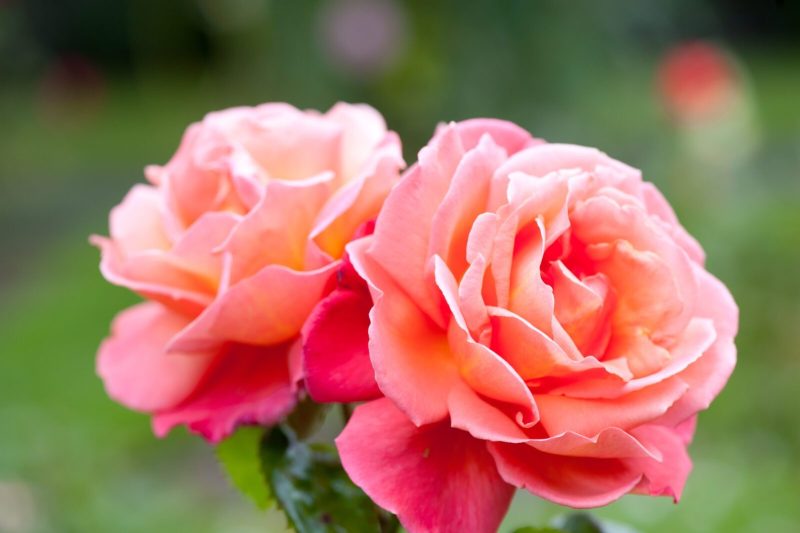
Hybrid Tea Roses are known for their elegant, long-stemmed blooms that are often used in bouquets and floral arrangements. Each flower typically grows one per stem and can reach up to 5 inches in diameter, displaying a high-centered, classic rose shape. Their petals come in a wide array of colors including red, pink, white, yellow, and even bi-color varieties, making them a favorite for formal gardens and cutting gardens.
These roses usually grow between 3 to 6 feet tall and 2 to 3 feet wide, forming an upright and open bush. They bloom in cycles throughout the growing season, offering multiple flushes of flowers from spring to fall. Hybrid tea roses prefer full sun and benefit from good air circulation to reduce disease risk.
Best grown in USDA hardiness zones 5 through 9, hybrid tea roses require regular pruning, fertilizing, and mulching to thrive. They are moderately high-maintenance and need consistent watering, especially during dry spells. Deadheading spent blooms encourages repeat flowering and helps maintain plant vigor.
Floribunda Roses
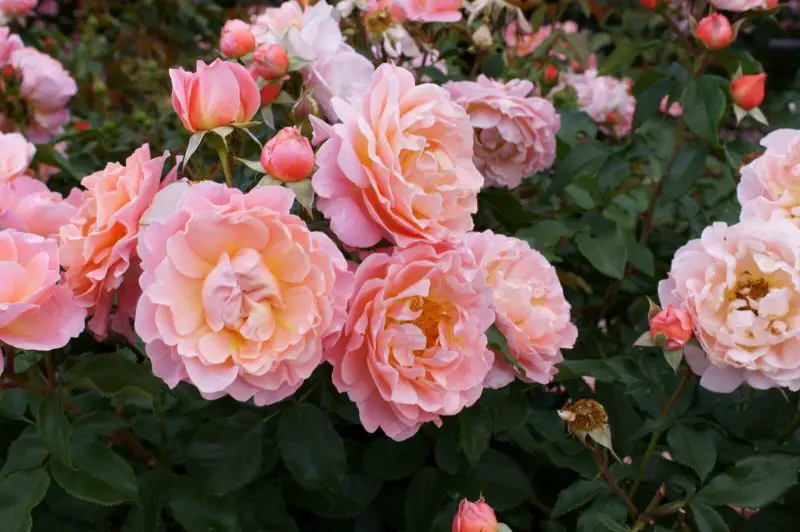
Floribunda Roses are prized for their vibrant clusters of blooms, combining the elegance of hybrid teas with the hardiness of shrub roses. Instead of a single bloom per stem, they produce multiple smaller flowers in dense clusters, creating a bold splash of color. Flower shades include orange, pink, white, purple, and yellow, with some varieties offering a slight fragrance.
These roses typically grow to a height of 2.5 to 5 feet and spread 2 to 4 feet wide, forming compact, bushy plants. They have a rounded growth habit and are especially suited for borders, hedges, and small garden spaces. Floribundas are repeat bloomers, flowering consistently from late spring until the first frost.
Well-suited to USDA zones 4 through 9, floribunda roses are generally easier to care for than hybrid teas. They benefit from full sun, regular watering, and monthly fertilization during the growing season. Light pruning in early spring helps shape the plant and promote healthy new growth.
Grandiflora Roses
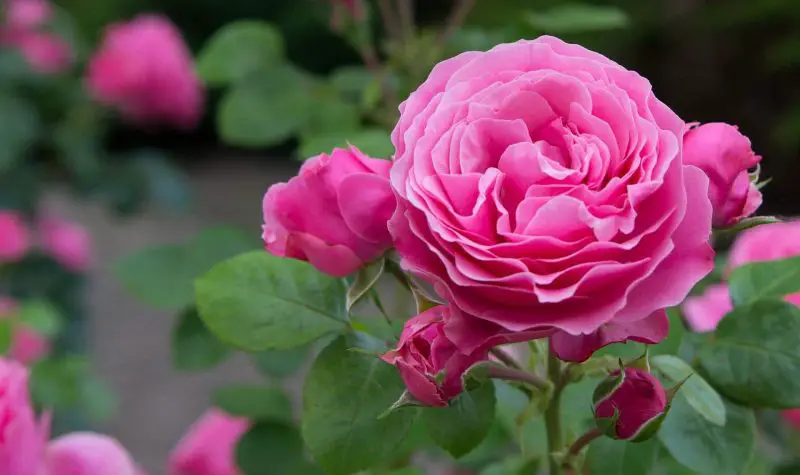
Grandiflora Roses combine the best traits of hybrid tea and floribunda roses, offering large, showy blooms arranged in small clusters on tall stems. Each bloom measures about 4 to 5 inches across and may appear singly or in groups of three to five. They are available in a wide range of colors including pink, red, peach, white, and yellow, often with a pleasant fragrance.
These roses grow upright and can reach heights of 4 to 6 feet, sometimes even taller under ideal conditions. They form sturdy, bushy plants that make excellent focal points in the garden. Grandifloras bloom repeatedly throughout the season, providing ongoing visual interest from late spring to fall.
Ideal for USDA zones 5 through 9, grandiflora roses need full sun and well-drained soil to thrive. They require regular maintenance including watering, fertilizing, and pruning. Because of their tall stature, some varieties may benefit from staking or wind protection to prevent damage during storms.
Climbing Roses
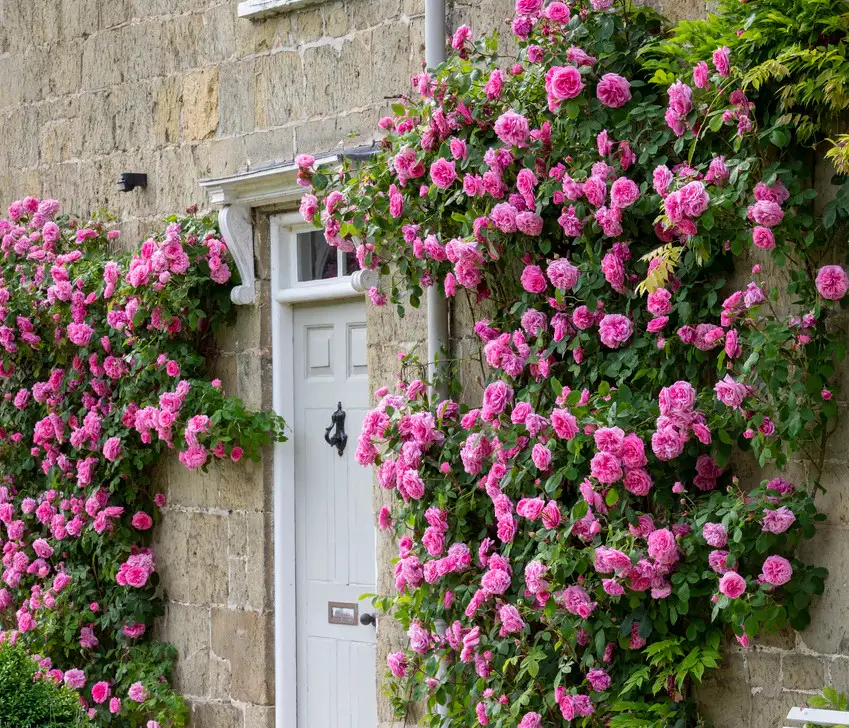
Climbing Roses are unique in that they have long, flexible canes that can be trained to climb fences, arbors, trellises, or walls. Their flowers tend to be larger than those of bush roses and are often grouped in clusters, adding a burst of color and fragrance. The blooms can come in a wide range of colors, including red, pink, yellow, white, and even bi-color variations, making them highly versatile for various garden designs.
These roses typically grow between 8 to 15 feet tall, depending on the variety, and can spread up to 6 feet wide. They tend to bloom once a year, although some varieties may produce multiple flushes of flowers throughout the growing season. The vigorous growth habit of climbing roses makes them ideal for vertical spaces or for softening the look of structures like fences and trellises.
Best suited for USDA hardiness zones 5 through 9, climbing roses thrive in full sun and well-drained soil. They require regular maintenance, including pruning in early spring to remove old wood and promote new growth. Some varieties may benefit from additional support to prevent breakage in windy conditions, and regular watering helps keep the plant hydrated throughout the growing season.
Shrub Roses
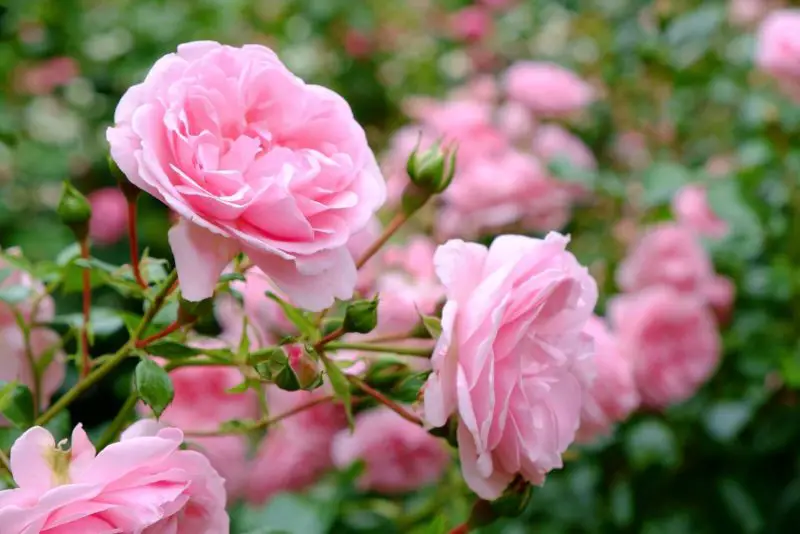
Shrub Roses are hardy and low-maintenance plants that are perfect for adding structure and color to landscapes. Varieties like Knock Out and David Austin English roses are particularly well-known for their prolific blooming and resistance to diseases. These roses produce abundant flowers in various shades, from vibrant reds and pinks to softer whites and yellows, and they often have a light, pleasant fragrance.
These roses typically grow between 3 to 5 feet tall and 3 to 4 feet wide, forming dense, bushy plants that are perfect for hedges, borders, or mass plantings. They bloom continuously throughout the growing season, providing a steady source of color from early spring to late fall. Shrub roses are easy to care for, as they do not require frequent deadheading and are more tolerant of less-than-ideal growing conditions.
Best suited for USDA zones 4 through 9, shrub roses thrive in full sun and well-drained soil. They are drought-tolerant once established, making them an excellent choice for low-maintenance landscapes. Regular pruning in early spring helps maintain their shape, while occasional fertilizing ensures healthy growth and abundant blooms.
Miniature Roses
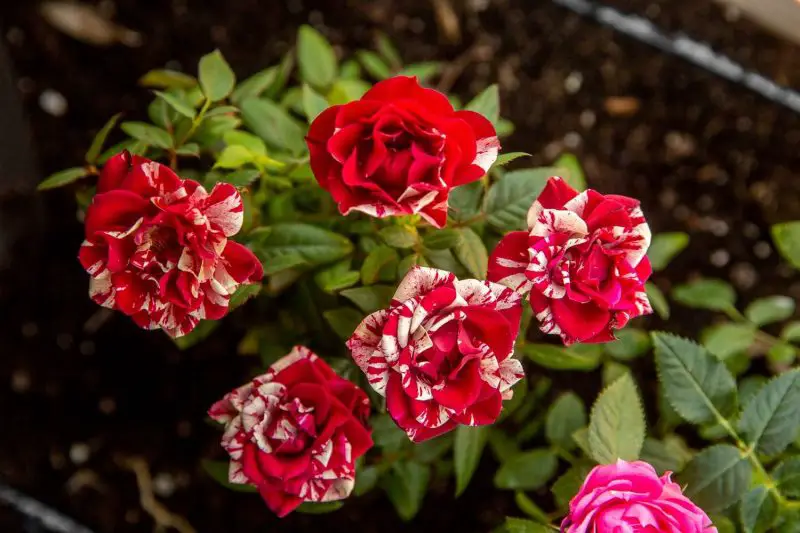
Miniature Roses are small-scale roses with compact blooms and foliage, making them perfect for container gardening, small gardens, or as decorative accents. These roses resemble their larger counterparts but are much smaller in size, with blooms typically ranging from 1 to 2 inches across. Despite their size, miniature roses come in a wide variety of colors, including red, pink, yellow, white, and even multi-colored varieties.
These plants generally grow between 12 to 24 inches tall and spread about 12 to 18 inches wide, making them ideal for small spaces or as ground covers. They tend to bloom repeatedly throughout the growing season, from early spring until the first frost, producing a steady stream of vibrant flowers. Miniature roses are well-suited for both outdoor and indoor growing conditions.
Best grown in USDA hardiness zones 5 through 9, miniature roses prefer full sun and well-drained soil. They require regular watering, especially during dry periods, and benefit from occasional fertilization to encourage more blooms. While these roses are relatively low-maintenance, regular pruning to remove dead or damaged growth will help keep the plant healthy and encourage a fuller, bushier appearance.
Ground Cover Roses (Carpet Roses)
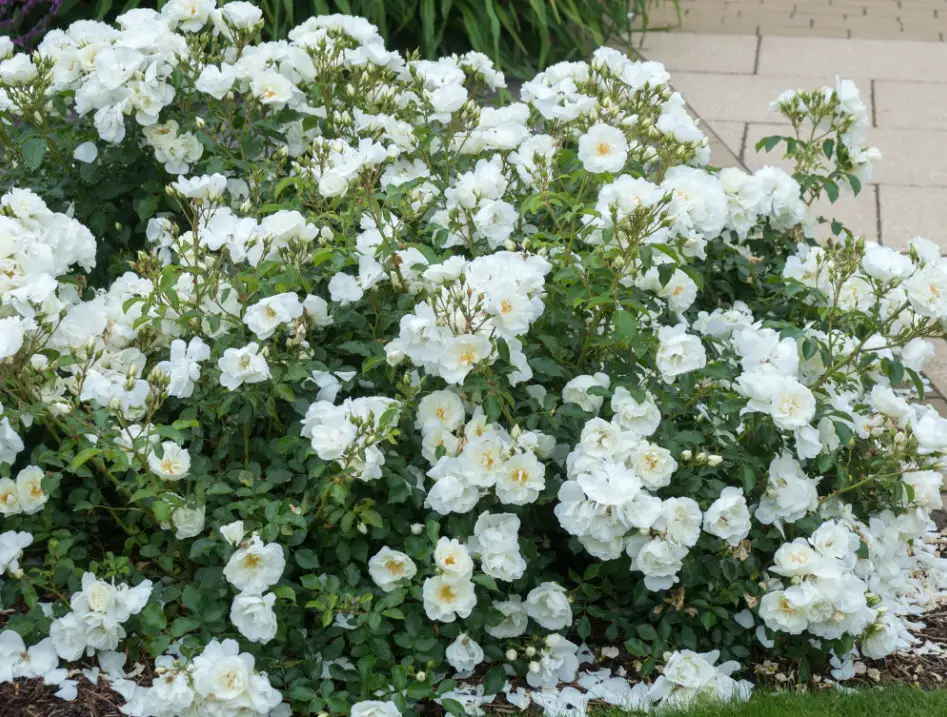
Ground Cover Roses, also known as Carpet Roses, are low-growing, spreading roses that are perfect for covering large areas of ground. These roses create a dense mat of foliage and blooms, making them excellent for erosion control, filling in bare spots, or as ground covers in garden beds. Their flowers are typically small to medium in size and come in a range of colors including red, pink, white, and yellow.
These roses grow relatively low, typically reaching a height of 12 to 24 inches and spreading 3 to 4 feet wide. They are known for their vigorous growth and ability to quickly cover a large area. Ground Cover Roses bloom profusely throughout the growing season, often starting in late spring and continuing into fall, producing a constant display of vibrant flowers.
Best suited for USDA hardiness zones 4 through 9, Ground Cover Roses thrive in full sun and well-drained soil. They are also highly disease-resistant, making them easier to care for than many other rose varieties. Regular pruning to remove dead or damaged growth and occasional fertilization will help maintain their health and encourage continuous blooming.
Tree Roses (Standard Roses)
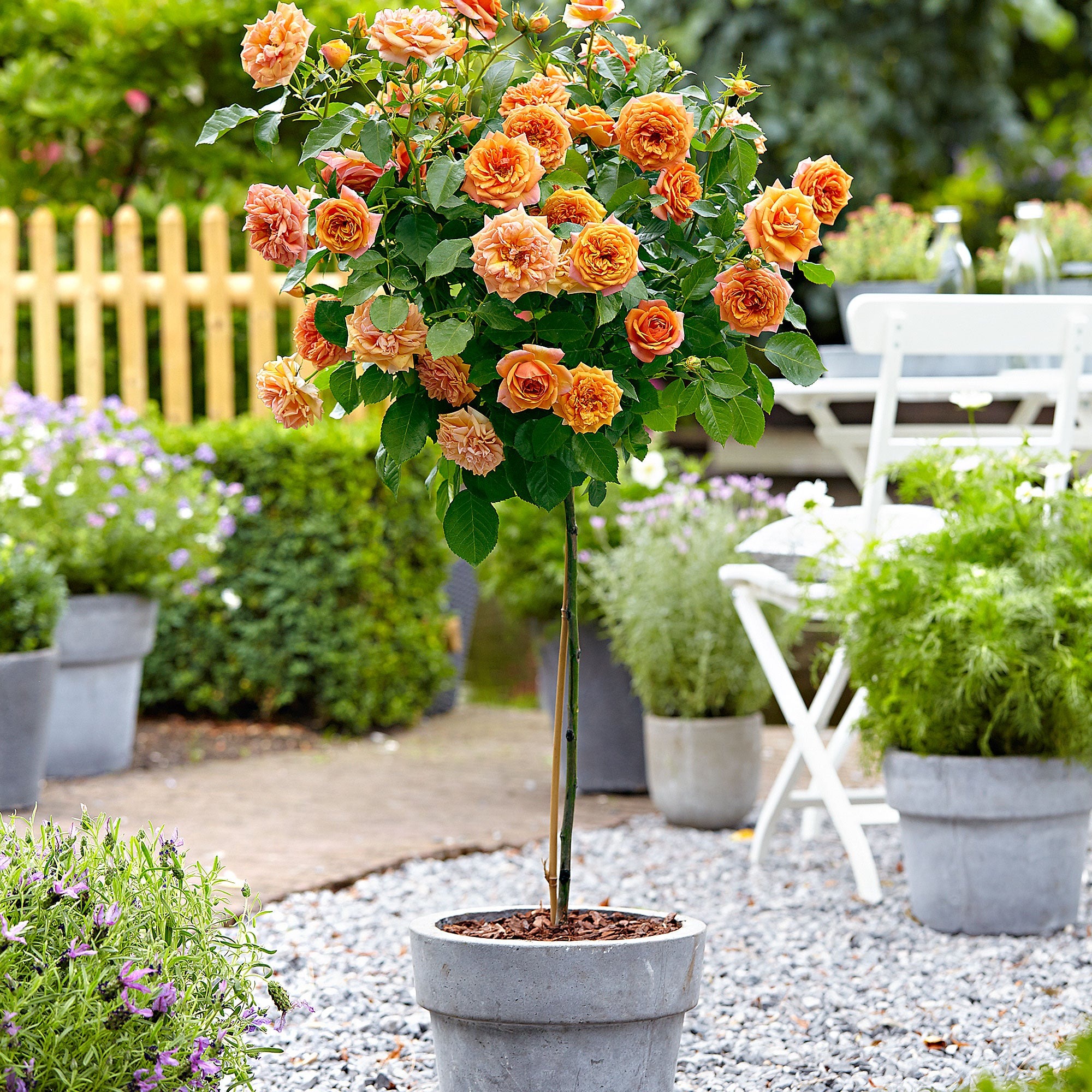
Tree Roses, also known as Standard Roses, are created by grafting a rose bush onto a tall stem, giving them a tree-like appearance. These roses stand out in the garden due to their elegant height and structure, with the flowers blooming at the top of the stem like a small tree. The blooms are large and showy, available in many colors, including red, pink, white, and yellow, depending on the variety.
Typically, Tree Roses grow to a height of 3 to 5 feet, with a long, slender trunk that supports the rose bush at the top. They often have a compact, upright growth habit, making them an excellent choice for creating focal points or for use in formal gardens. Tree Roses can produce flowers in flushes throughout the growing season, with a peak bloom time in late spring to early summer.
Tree Roses thrive in USDA hardiness zones 5 through 9 and prefer full sun with well-drained soil. They require regular maintenance, including pruning to maintain their shape and health. Since the grafted stem can be vulnerable to extreme cold, winter protection is often necessary in colder climates to prevent damage to the trunk.
Old Garden Roses (Heirloom Roses)
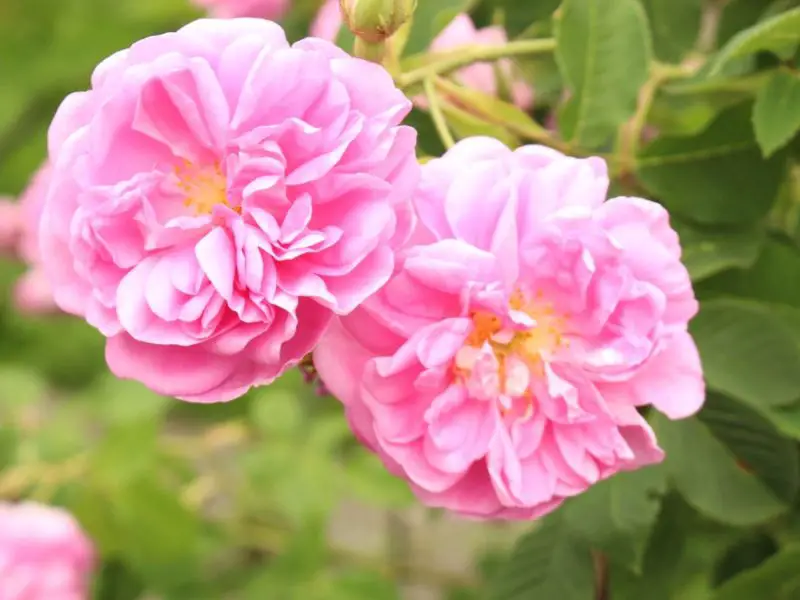
Old Garden Roses, also referred to as Heirloom Roses, include all classes of roses that existed before 1867. These roses are treasured for their historical significance, rich fragrance, and full, rounded bloom forms. They are known for their strong, often intoxicating fragrance and their ability to thrive in a variety of growing conditions. Some well-known types of Old Garden Roses include Alba Roses, Damask Roses, and Gallica Roses.
These roses can vary in size depending on the variety, but most Old Garden Roses grow to a height of 3 to 6 feet with a wide spread. They are typically bushy plants with dense foliage and can bloom in a variety of colors, from soft pastels to deep reds. Old Garden Roses are known for their one-time blooming cycle, though some varieties may bloom again later in the season.
Old Garden Roses are best grown in USDA hardiness zones 4 through 9 and prefer full sun or partial shade with well-drained soil. These roses tend to be more resilient to pests and diseases compared to modern hybrids and often require less maintenance. Pruning should be done after the main bloom cycle, and occasional feeding with organic fertilizers can help encourage healthy growth and blooms.
English Roses (David Austin Roses)
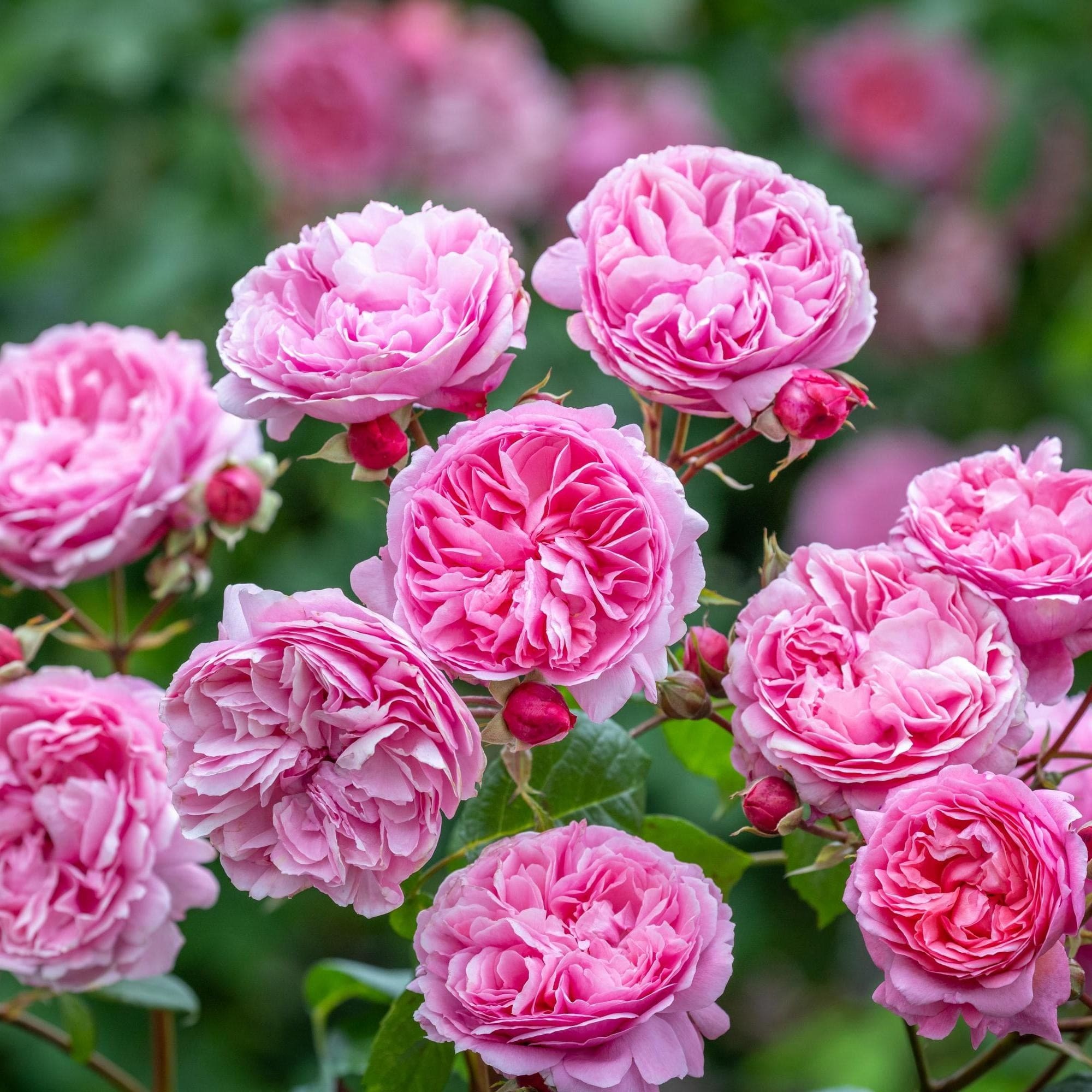
English Roses, developed by renowned breeder David Austin, are known for their ability to combine the charm and fragrance of old garden roses with the repeat blooming traits of modern hybrid roses. These roses are loved for their full, cupped blooms that often resemble those of traditional roses, but they bloom multiple times throughout the growing season, making them more reliable than their heirloom counterparts. Their fragrance is usually strong and pleasant, with some varieties offering a fruity or musky scent.
Typically growing between 3 to 6 feet in height, English Roses form dense, bushy plants that are perfect for garden beds, borders, or hedges. Their flowers are large and multi-layered, ranging in colors from soft pastels like pale pink and lavender to deep, rich hues like red and burgundy. Some varieties also have an exquisite fragrance that adds to their charm.
English Roses thrive in USDA hardiness zones 5 through 9, preferring full sun and well-drained soil. They are relatively easy to care for, requiring periodic pruning to shape the plant and remove dead or damaged growth. Regular feeding during the growing season helps maintain healthy blooms, and while they are disease-resistant, they still benefit from occasional treatment to prevent common rose ailments.
Polyantha Roses
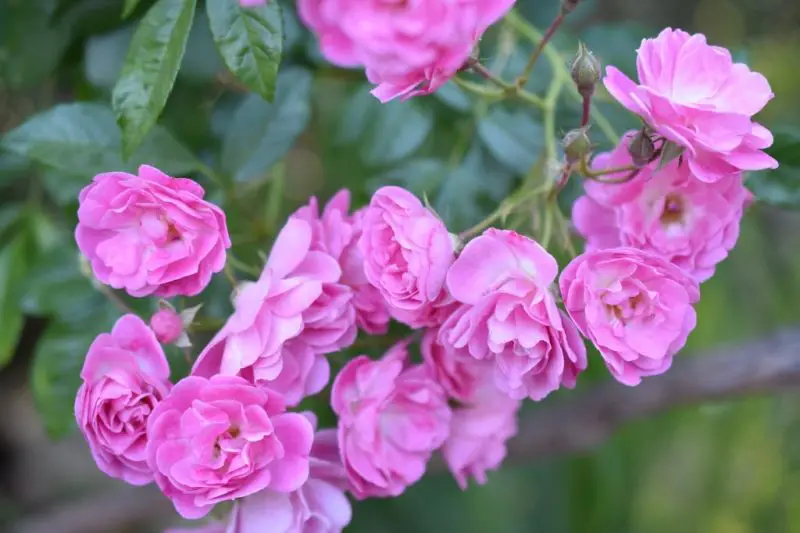
Polyantha Roses are compact, low-growing roses that produce an abundance of small flowers in large clusters. These roses are especially known for their hardiness and disease resistance, making them an excellent choice for gardeners looking for a low-maintenance rose. The flowers come in a wide range of colors, including white, pink, red, and yellow, and they typically have a light fragrance.
Growing to a height of 1.5 to 3 feet with a spread of 2 to 4 feet, Polyantha Roses form dense, bushy plants that are ideal for borders, ground covers, or containers. They bloom continuously from late spring to fall, creating a vibrant display of color throughout the growing season. Their small size and compact form make them perfect for gardens with limited space.
Best suited for USDA hardiness zones 4 through 9, Polyantha Roses thrive in full sun and well-drained soil. They are very resilient, requiring minimal care once established, although regular watering and occasional fertilization will help them grow strong and produce abundant flowers. Light pruning after the bloom period ensures a tidy appearance and encourages healthy growth.
Wild Roses (Species Roses)
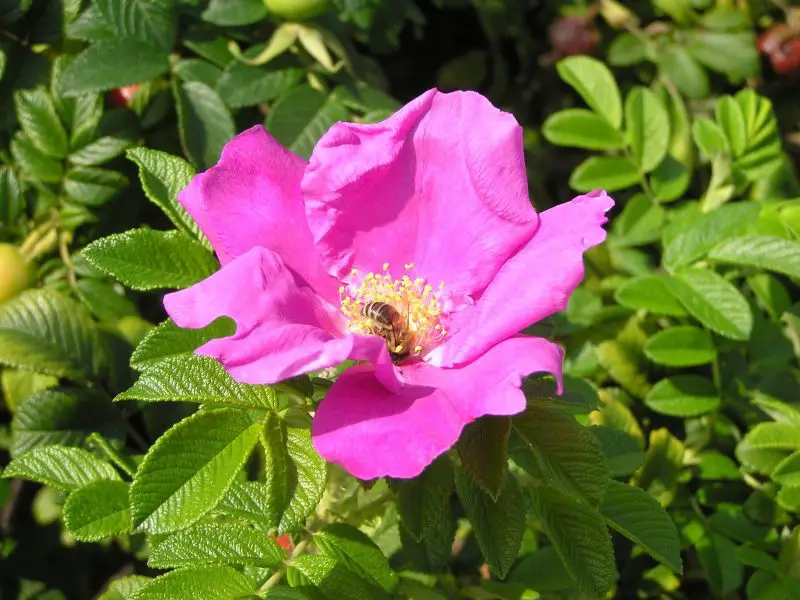
Wild Roses, or Species Roses, are the original, naturally occurring roses found in various regions around the world. These roses are typically characterized by their simple, five-petaled flowers and their ability to thrive in a wide range of environments. Wild roses are often fragrant, although their scent tends to be subtler than that of hybrid or English roses. They bloom once a year, usually in late spring or early summer, and their flowers come in shades of pink, white, or red.
The height and spread of wild roses can vary depending on the species, but they generally grow between 3 to 6 feet tall. Some species, like Rosa rugosa, have a more shrub-like form, while others, such as Rosa canina (Dog Rose), can grow as sprawling vines. Wild roses are hardy and tolerant of a variety of soil conditions, making them an excellent choice for naturalistic or low-maintenance gardens.
Wild Roses are best suited for USDA hardiness zones 3 through 9 and prefer full sun or partial shade with well-drained soil. They are extremely drought-tolerant and resistant to most common rose diseases. While they require minimal care, pruning to remove dead or damaged wood will help maintain their health and appearance. Some well-known species include Rosa rugosa, Rosa canina (Dog Rose), and Rosa multiflora, each offering unique characteristics and benefits for different garden settings.







Loved this post! Your tips are always so practical and easy to follow—my plants are thriving thanks to your guidance.